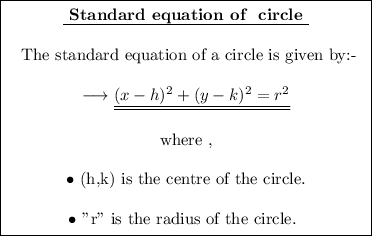Answer:
See below
Explanation:
To find:-
- Which statements are true .
Answer:-
The given equation of the circle is ,

For finding the correct statements , we need to convert this equation into standard form for a circle.
The standard equation of circle is given by,

Now for that we need to complete the square for "x" . This can be done by ,
Rearrange the terms,

Add and subtract 1² .

Simplify,

Notice that the terms inside the small brackets are in the form of a² - 2ab + b² , which is the whole square of (a-b) . So we can write it as,

Add 9 on both the sides ,

This can be written as,

On comparing it to the standard form, we have;


Let's check the given statements ,
Statement 1: The radius of the circle is 3 units.
- This statement is true as we just calculated the radius to be 3 units.
Statement 2: The centre of the circle lies on the x-axis.
- This statement is also true as you can see that the y coordinate to the centre is 0 , and the x coordinate is 1 , so it will be on x-axis .
Statement 3: The statement of the circle lies on the y-axis.
- This statement is false since in the previous statement we proved that the centre lies on the x-axis .
Statement 4: The standard equation of the circle is (x-1)²+y² = 3
- This statement is false as we calculated the value of r² to be 9 .
Statement 5: The radius of this circle is the same as the radius of the circle whose equation is x² + y² = 9.
- The given equation of circle is x² + y² = 9 , if we convert this into standard form, we will get ; x² + y² = 3² . Now on comparing it to the standard equation, we see that the radius is 3 units . Hence the given statement is also true .
The graph for the same has been attached.